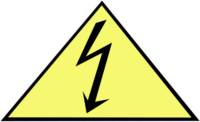Work-related musculoskeletal disorders (MSDs) may not make the headlines like more dramatic injuries do, but they nonetheless have a considerable –and negative – impact on companies’ bottom lines. The Bureau of Labor Statistics (BLS) reports that in 2013, MSD cases accounted for 33% of all worker injury and illness cases. Work-related MSDs are among the most frequently reported causes of lost or restricted work time.
What, exactly are MSDs? They’re injuries that occur over time due to lifting heavy items, bending, reaching overhead, pushing and pulling heavy loads, working in awkward body postures and performing the same or similar tasks repetitively. They affect the muscles, nerves, blood vessels, ligaments and tendons.
Some common MSDs are:
- Carpal tunnel syndrome
- Tendinitis
- Rotator cuff injuries (affects the shoulder)
- Epicondylitis (affects the elbow)
- Trigger finger
- Muscle strains and low back injuries
Prevention is key
What can employers do to prevent MSDs among workers? Use ergonomics --- fitting a job to a person --- in order to help lessen muscle fatigue.
OSHA recommends implementing an ergonomic process that uses the principles of a safety and health program to address MSD hazards. This should be viewed as an ongoing function that is incorporated into the daily operations, rather than as a one-off.
An ergonomic process can be effective in high-risk industries as diverse as construction, food processing, firefighting, office jobs, healthcare, transportation and warehousing.
Elements of an ergonomic process:
- Provide Management Support - A strong commitment by management is critical to the overall success of an ergonomic process. Management should define clear goals and objectives for the ergonomic process, discuss them with their workers, assign responsibilities to designated staff members, and communicate clearly with the workforce.
-
Involve Workers - A participatory ergonomic approach, where workers are directly involved in worksite assessments, solution development and implementation is the essence of a successful ergonomic process. Workers can:
- Identify and provide important information about hazards in their workplaces.
- Assist in the ergonomic process by voicing their concerns and suggestions for reducing exposure to risk factors and by evaluating the changes made as a result of an ergonomic assessment.
- Provide Training - Training is an important element in the ergonomic process. It ensures that workers are aware of ergonomics and its benefits, become informed about ergonomics related concerns in the workplace, and understand the importance of reporting early symptoms of MSDs.
- Identify Problems - An important step in the ergonomic process is to identify and assess ergonomic problems in the workplace before they result in MSDs.
- Encourage Early Reporting of MSD Symptoms - Early reporting can accelerate the job assessment and improvement process, helping to prevent or reduce the progression of symptoms, the development of serious injuries, and subsequent lost-time claims.
- Implement Solutions to Control Hazards - There are many possible solutions that can be implemented to reduce, control or eliminate workplace MSDs.
- Evaluate Progress - Established evaluation and corrective action procedures are required to periodically assess the effectiveness of the ergonomic process and to ensure its continuous improvement and long-term success. As an ergonomic process is first developing, assessments should include determining whether goals set for the ergonomic process have been met and determining the success of the implemented ergonomic solutions.
Click here more information on how to prevent MSDs among your workers.


